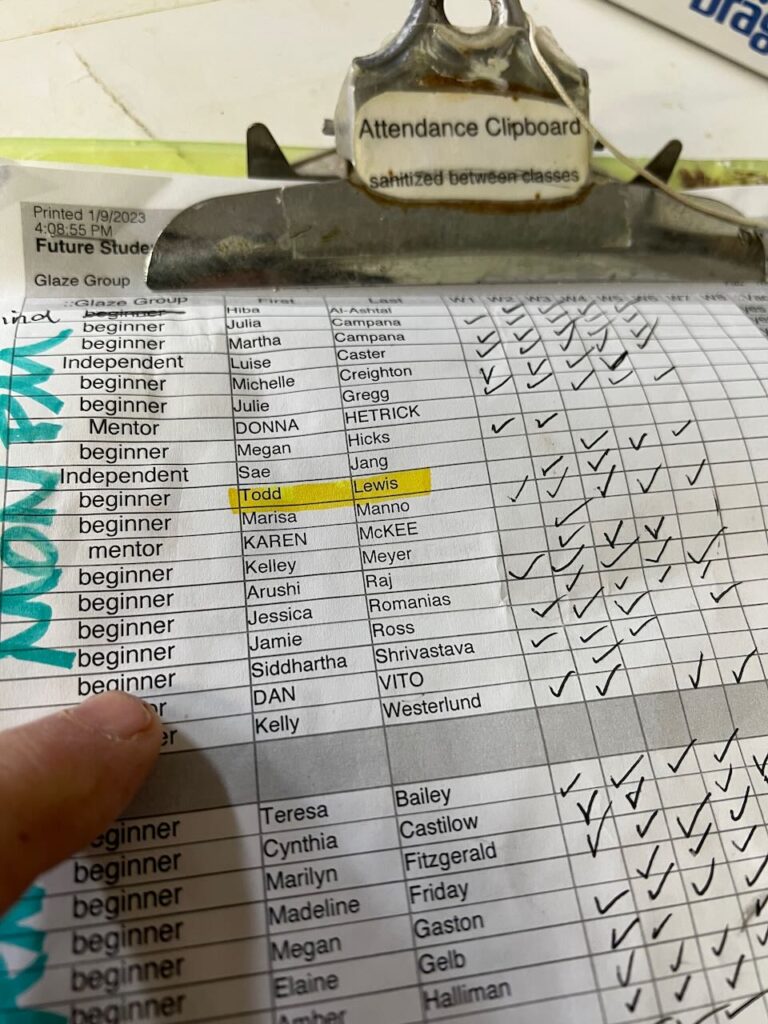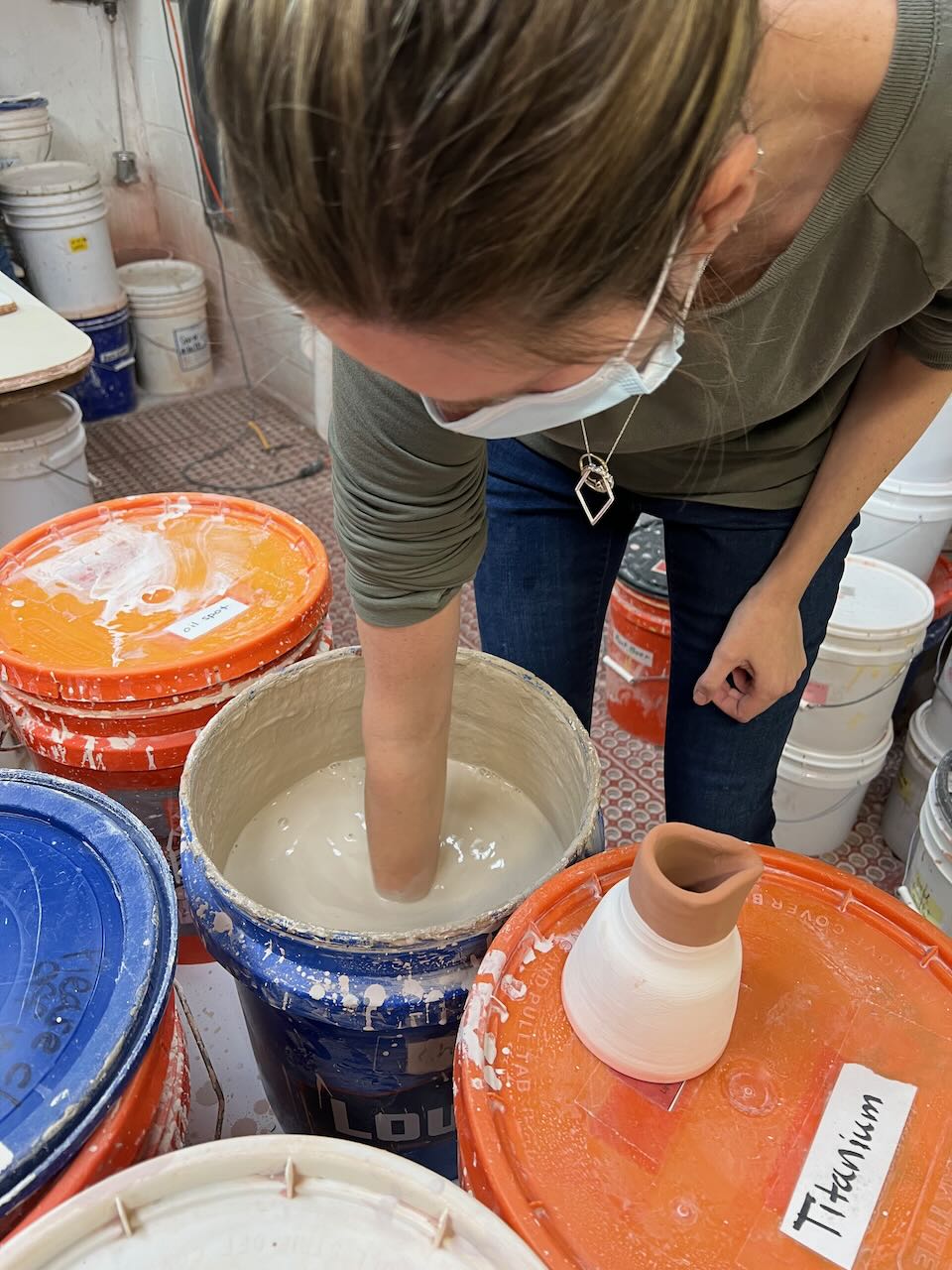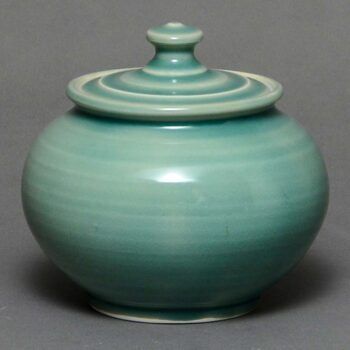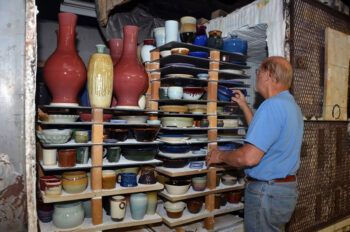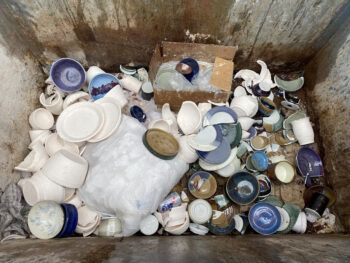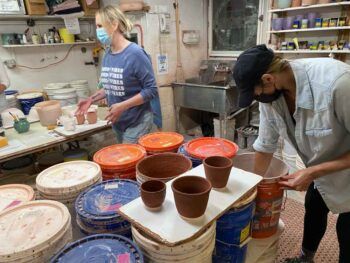Things you should know that your instructor may not have told you
Well, maybe they did tell you, or maybe you were upstairs during the presentation, or maybe you just forgot… In any case here is a review.
These are the basic glazing steps. They are laminated and on the glaze table. Follow this sequence.

All the glazes in the orange buckets are extremely fluid and will ruin your pots if not used correctly. They are beautiful, but beginners should avoid them. You will need direct supervision when using them. Never, never, never use them on the outside of a pot near the bottom!! That spells disaster!
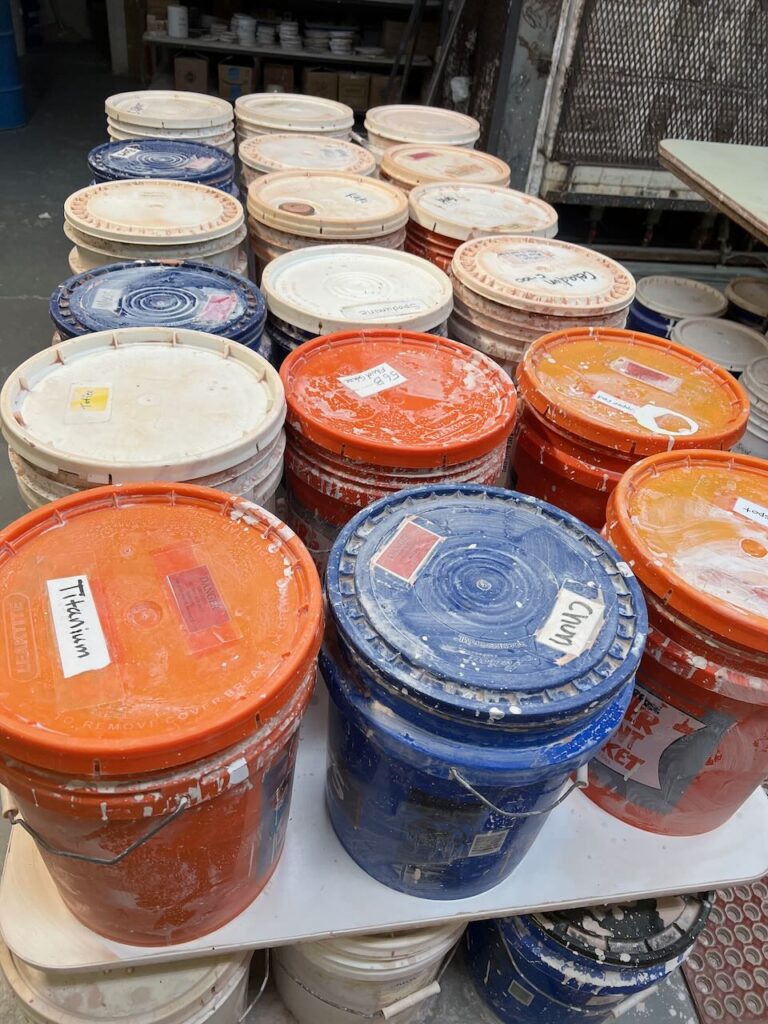
All the glazes in the BLUE buckets are slightly less fluid and can ruin your pots if not used correctly. Beginners may use them with caution and supervision!

All the glazes on the table closest to the door are more fluid than the ones on the far side of the room. Less fluid glazes are easier and safer to use, and are more predictable.

You should not clutter up the glaze table with boards.
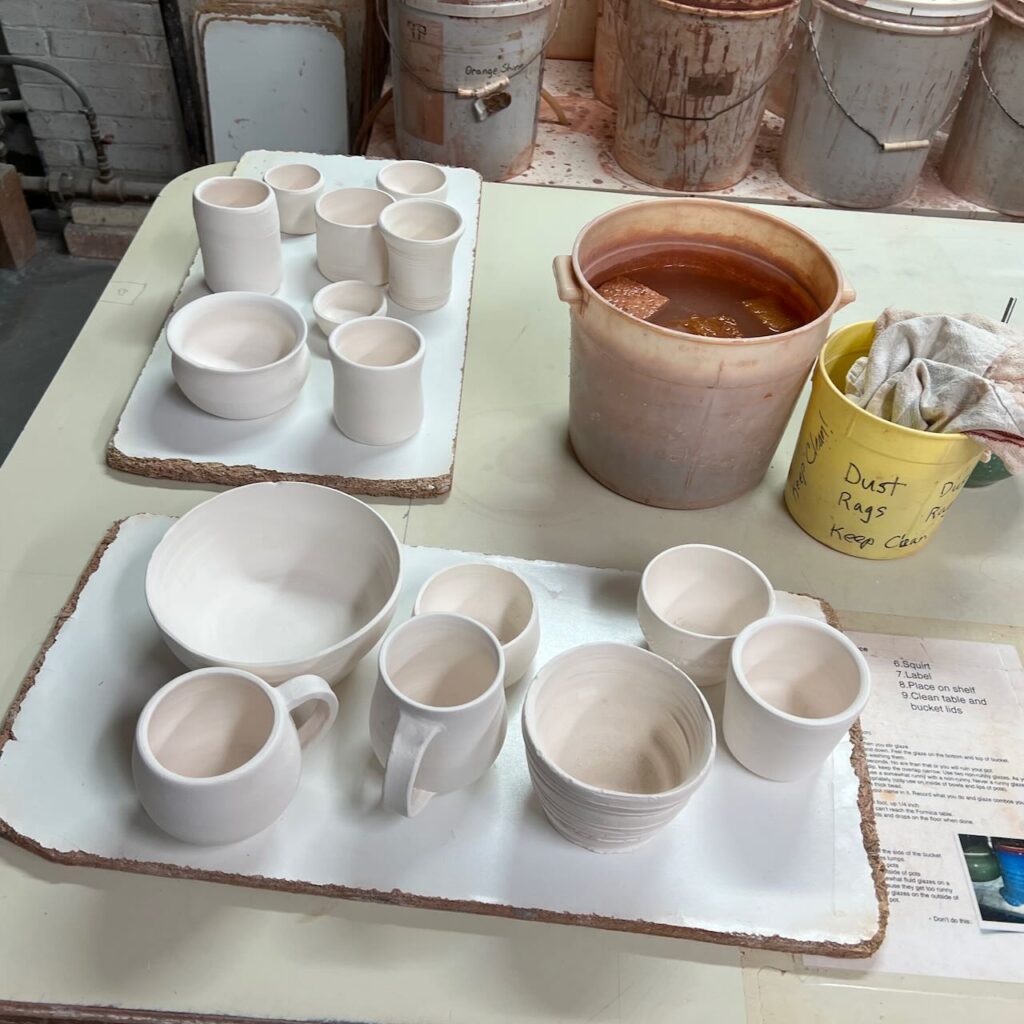
After devising a glaze plan and getting it approved, move your pots onto a ware rack, and take them one at a time to the glaze table for glazing.

You should read the glaze manual in the glaze room and know the four standard ways we apply glaze.
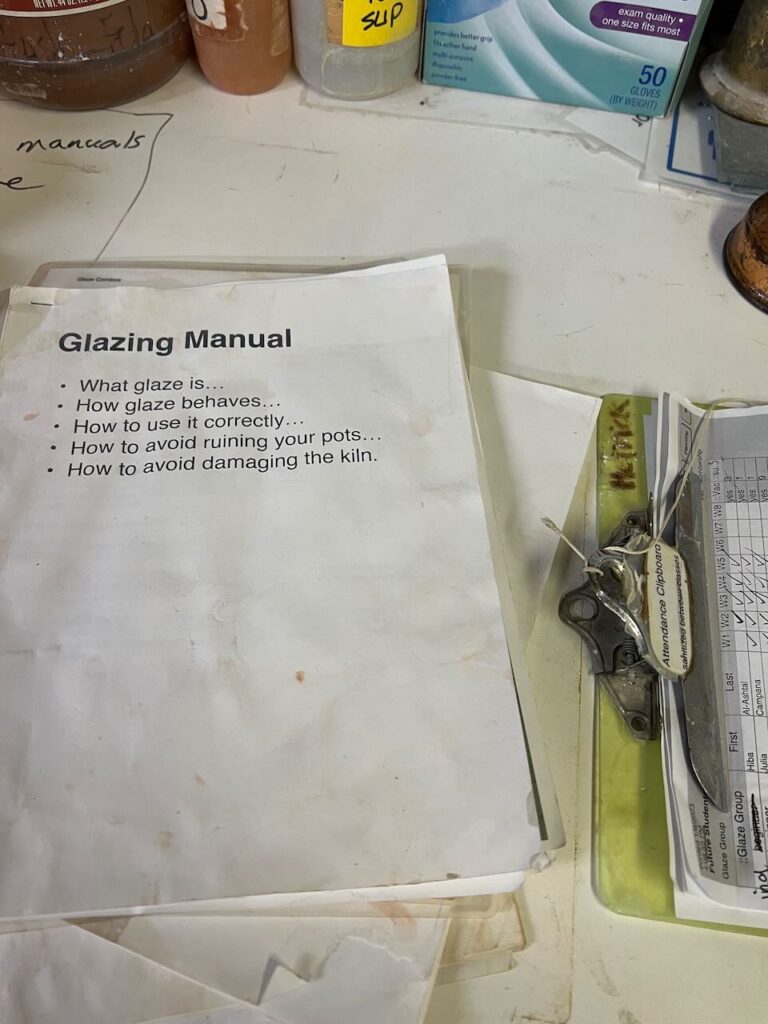
In addition to the glaze samples, there is a handy guide of glaze combinations in the glaze room.
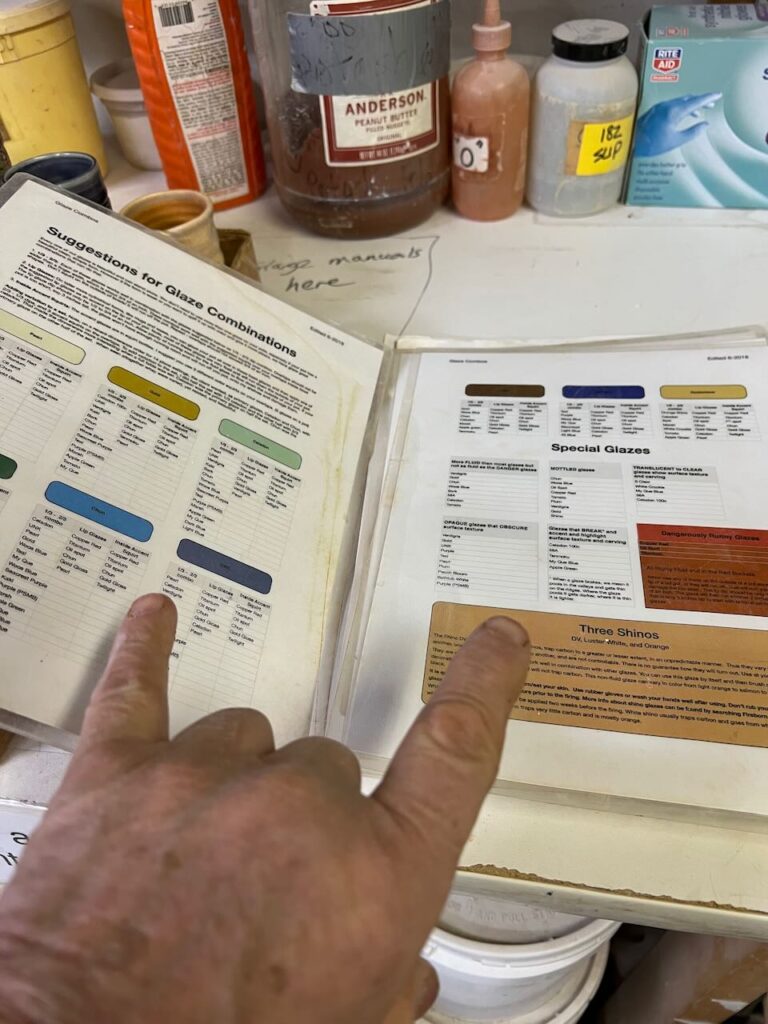
Stir thoroughly with your hand so you can FEEL when the glaze is well mixed.

You are a “beginner” glazer and must be supervised when glazing until your instructor promotes you to “independent”, which usually takes from 5 to 8 terms at Fireborn. This is a professional working studio. Our glazes are incredibly beautiful, but they were not designed for novices. You need skill to use them!
